 Image 1 of 10
Image 1 of 10

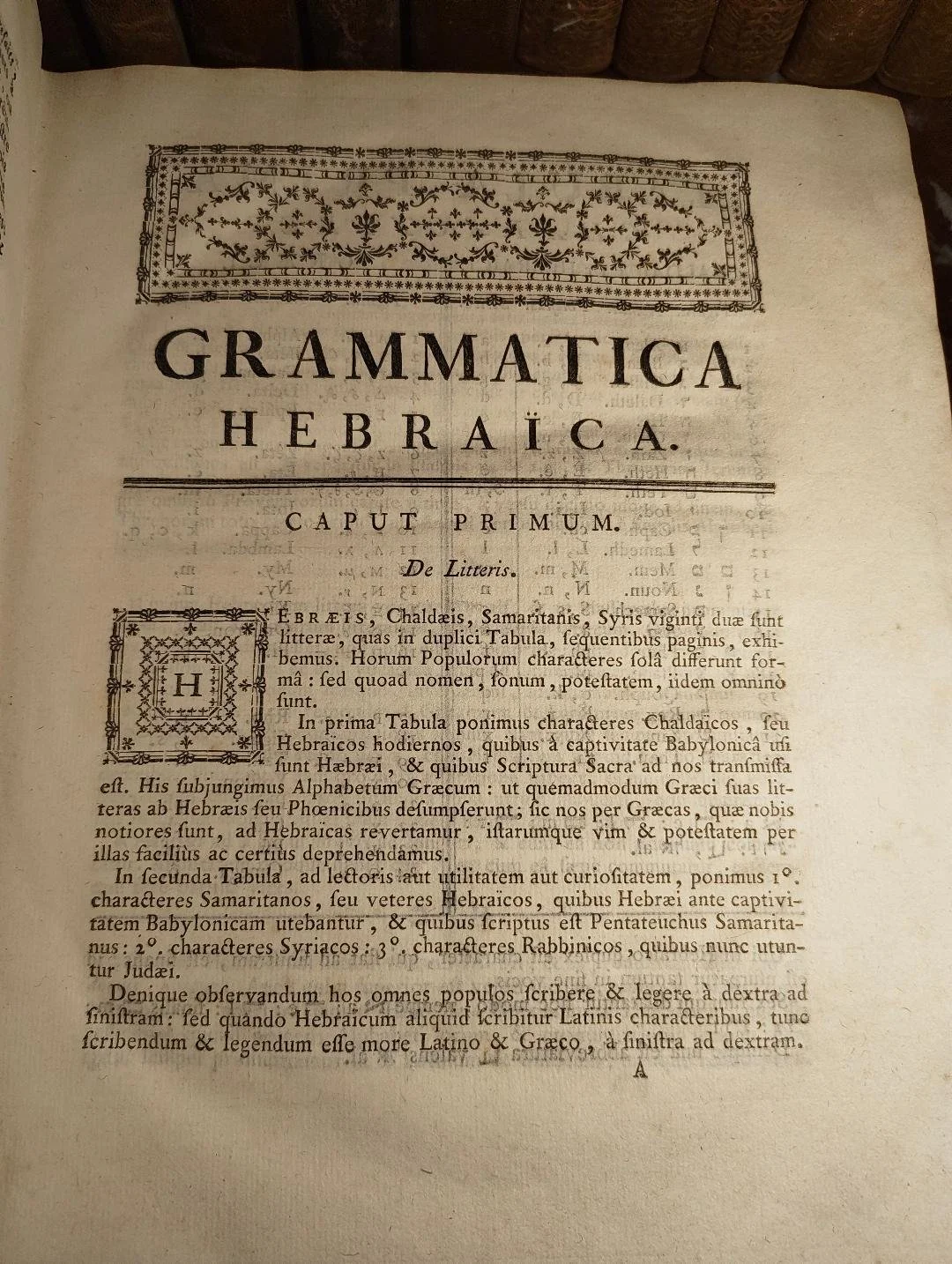 Image 2 of 10
Image 2 of 10

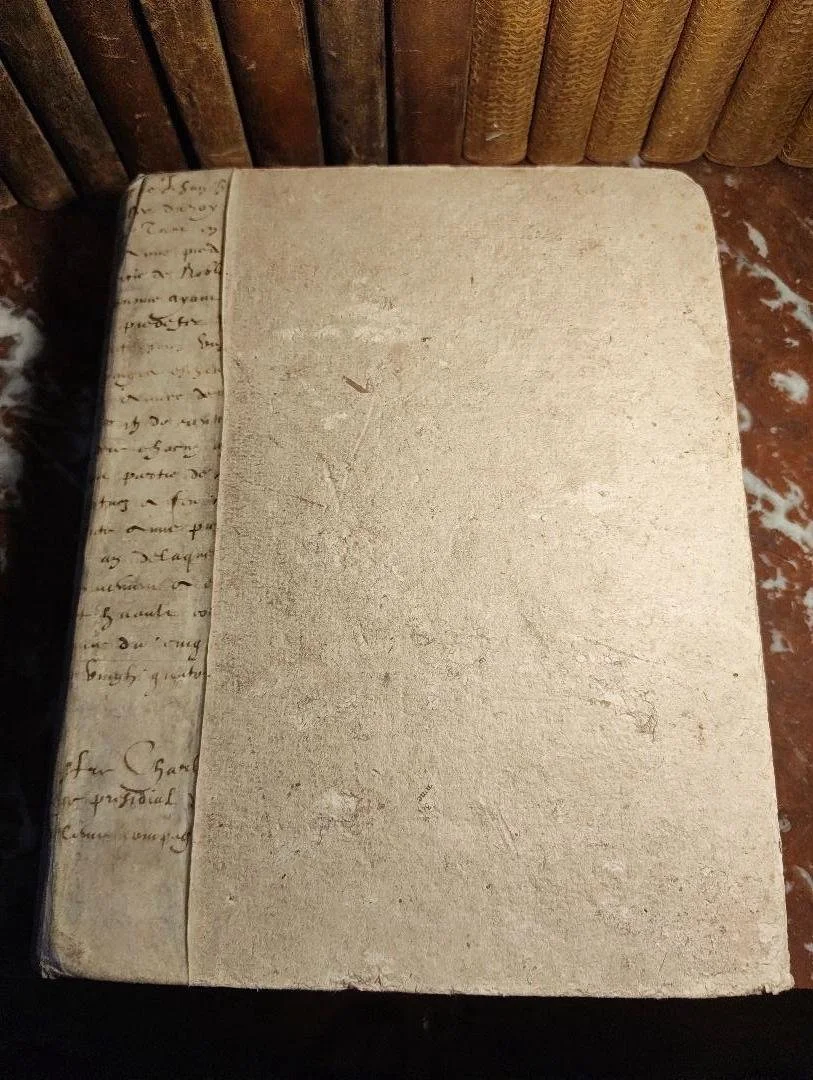 Image 3 of 10
Image 3 of 10

 Image 4 of 10
Image 4 of 10

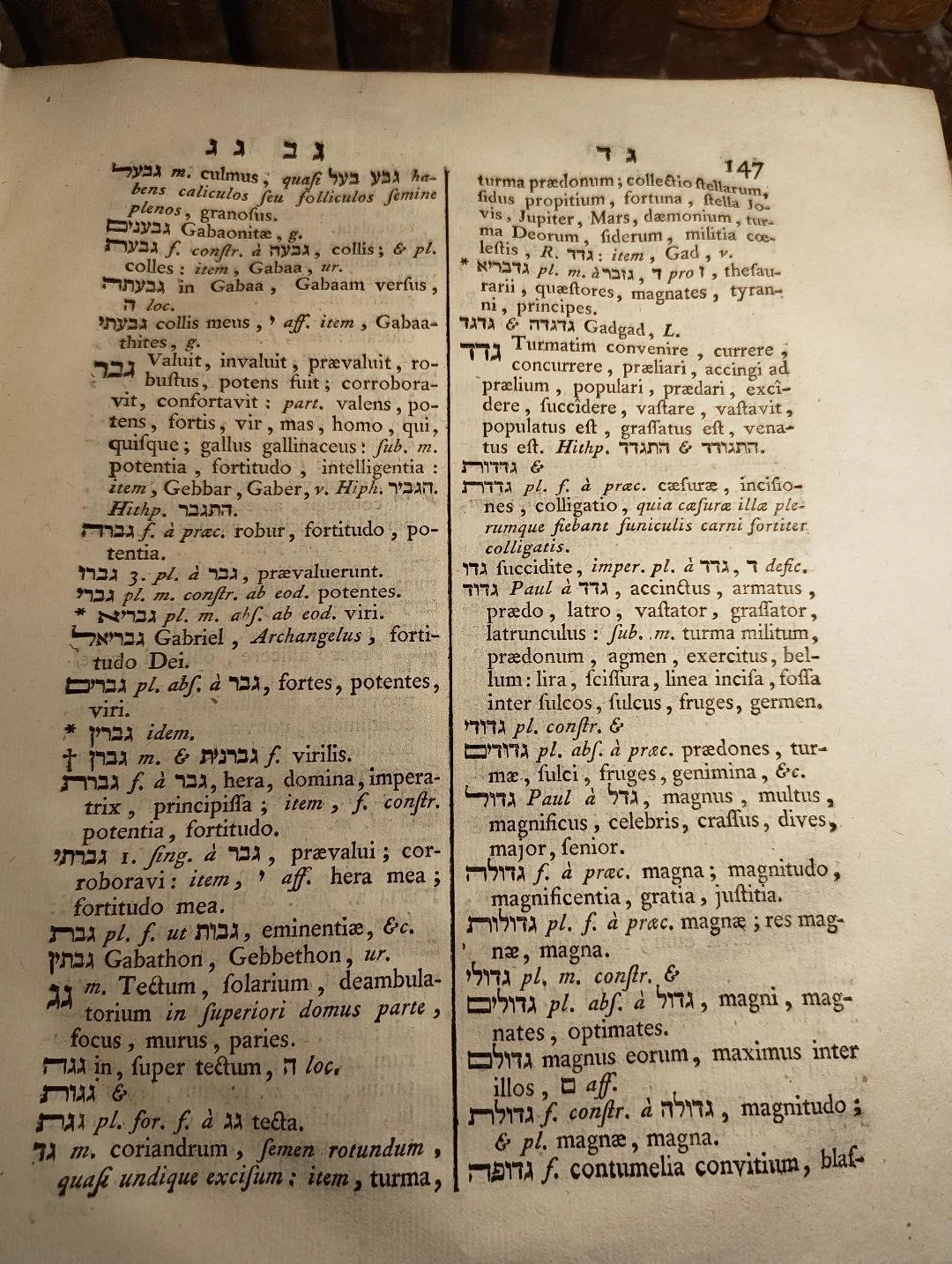 Image 5 of 10
Image 5 of 10

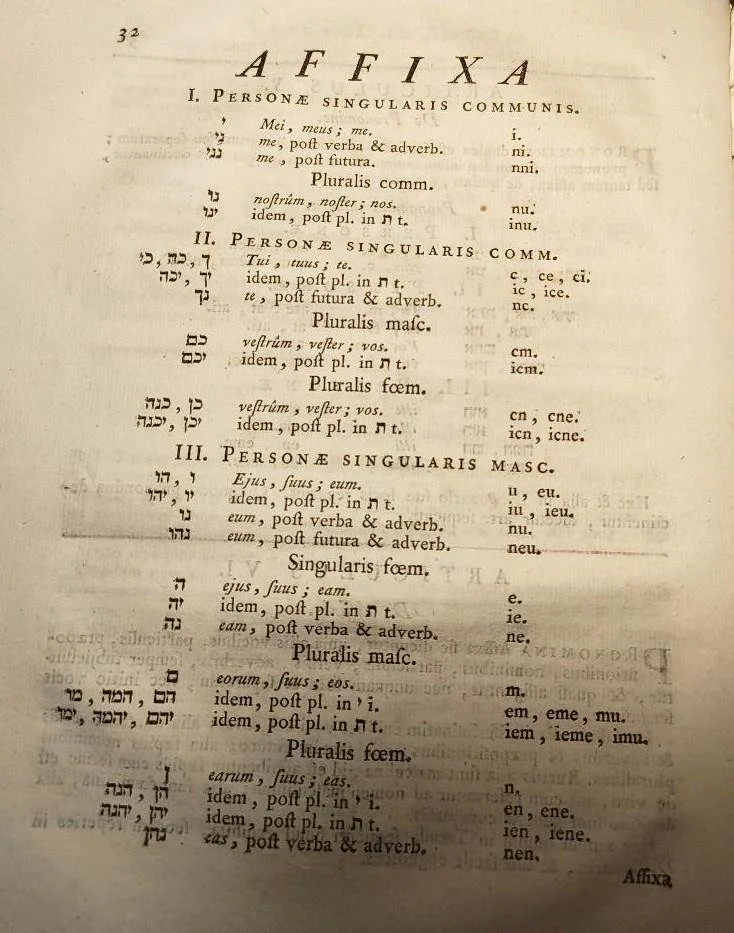 Image 6 of 10
Image 6 of 10

 Image 7 of 10
Image 7 of 10

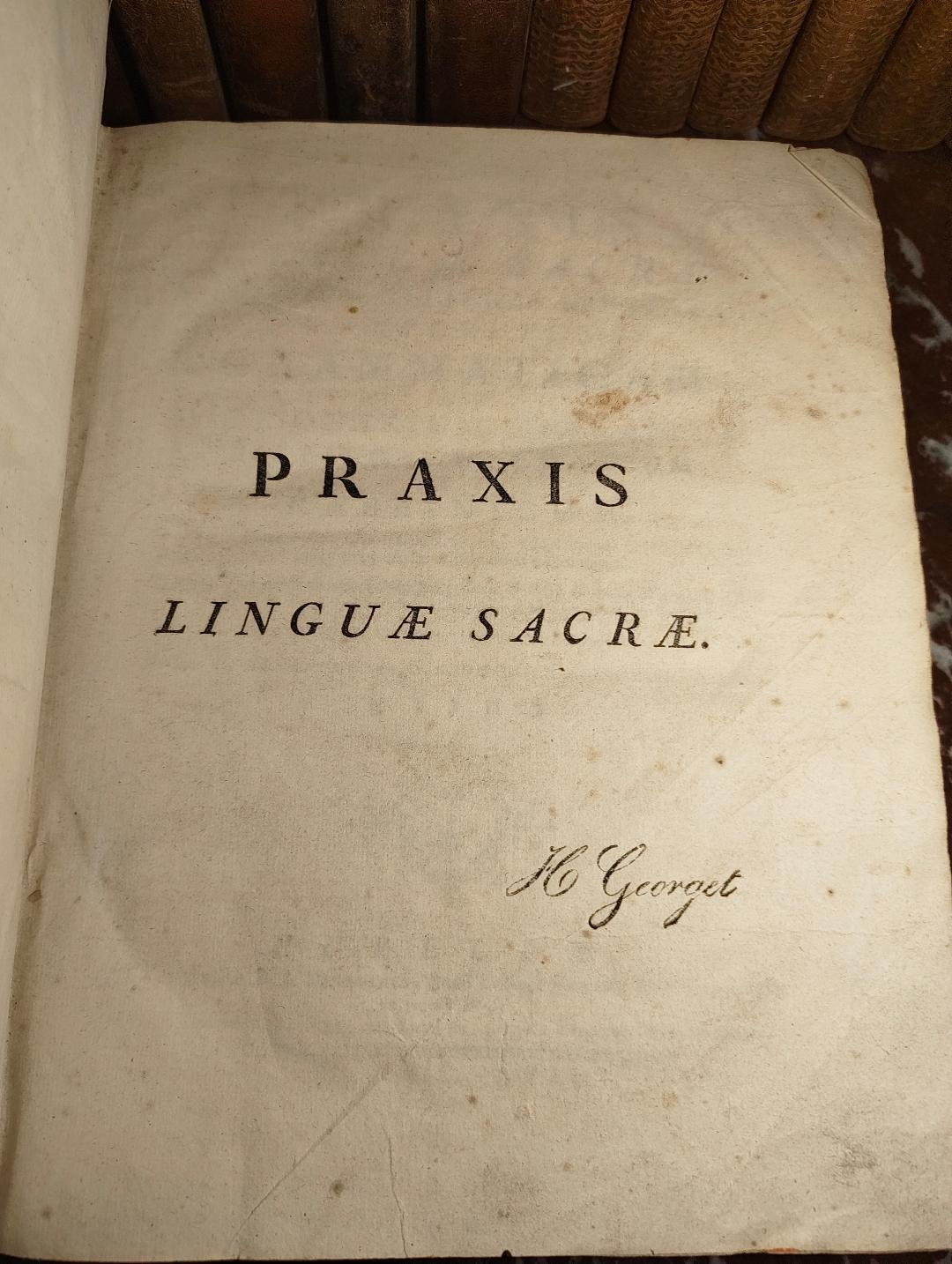 Image 8 of 10
Image 8 of 10

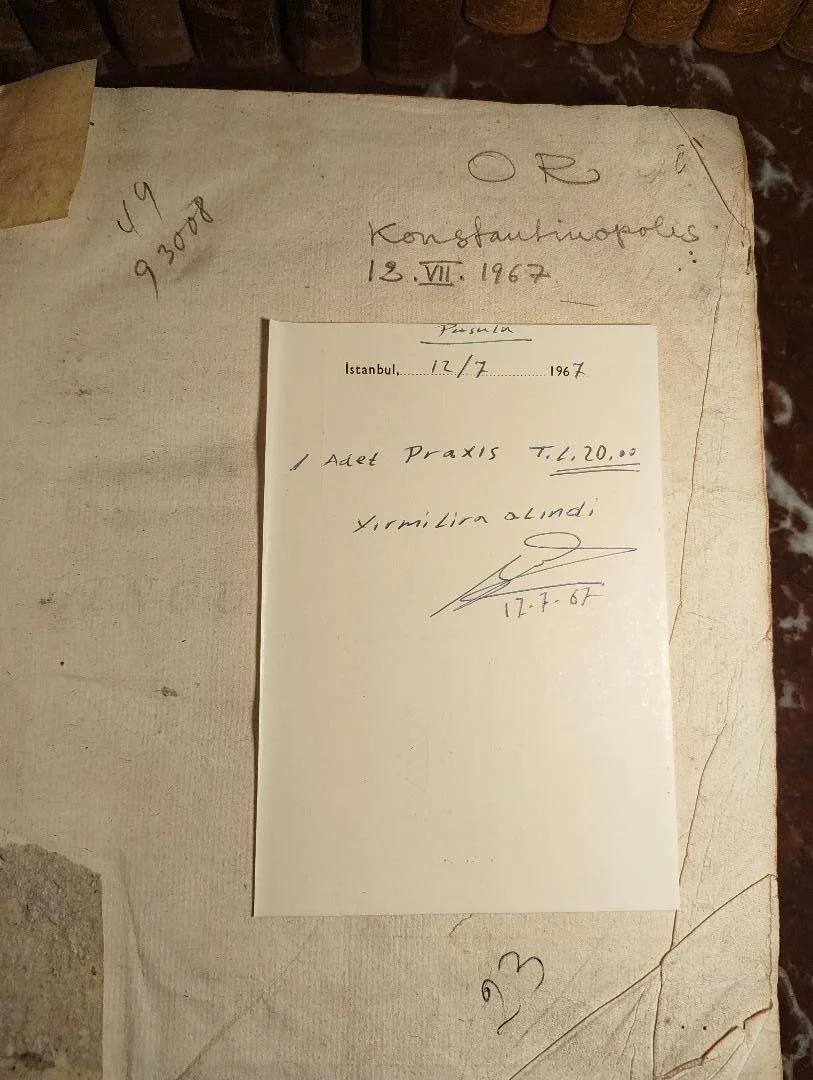 Image 9 of 10
Image 9 of 10

 Image 10 of 10
Image 10 of 10











Bonaventure Giraudeau. Praxis Linguæ Sacræ. La Rochelle 1757. Jesuit Hebrew Grammar in Original Cartonnage
This 1757 edition of Praxis Linguæ Sacræ stands as a remarkable artifact of eighteenth century biblical scholarship. Written by the Jesuit scholar Bonaventure Giraudeau and printed at the Jesuit College press in La Rochelle, the volume brings together a complete Hebrew grammar with an extensive dictionary of Biblical, Chaldaic, and Rabbinical Hebrew.
Such works formed the backbone of theological education in the early modern period, bridging classical philology with scriptural exegesis.
A Jesuit approach to sacred languages
Giraudeau’s treatise reflects the scholarly ambitions of the Society of Jesus in the mid eighteenth century, when mastery of Hebrew was considered essential for understanding the Old Testament in its original forms. The volume opens with grammatical instruction before shifting into a wide-ranging lexicon that draws on the differing registers of Hebrew found in scripture, liturgy, and rabbinic literature.
Printed with decorated headpieces and carefully cast Hebrew type, it is an elegant example of provincial Jesuit printing at a moment when French presses competed to supply learned texts across Europe.
Original cartonnage binding and a long scholarly journey
The book survives in its original eighteenth century cartonnage binding with a handwritten spine title, a fragile and increasingly rare format seldom preserved in academic volumes of this age. Such bindings offer a direct glimpse into the working libraries of clerics and students and are prized today for their authenticity.
Provenance notes deepen the story: the name H. Georget appears on the title page, and a later note inserted by a bookseller in Istanbul in 1967 records the book’s presence in Turkey during the mid twentieth century, suggesting a broad and scholarly trajectory through Europe and the Near East.
Condition
The cartonnage boards show the expected wear and softening of a utilitarian eighteenth century binding. The handwritten spine title remains visible. Internally the text is clear and crisp, with only light toning and occasional signs of handling. The Hebrew typeset is sharp throughout, and the paper retains its strength.
Significance
This volume illuminates several key threads in the history of learning:
• the Jesuit commitment to original language study
• the development of Hebrew pedagogy during the Enlightenment
• the survival of fragile cartonnage bindings from academic contexts
• the movement of scholarly books across Europe and the Eastern Mediterranean
For collectors of Judaica, historical linguistics, Jesuit scholarship, or early Hebrew printing, this is a culturally resonant and materially rare example from the mid eighteenth century.
This 1757 edition of Praxis Linguæ Sacræ stands as a remarkable artifact of eighteenth century biblical scholarship. Written by the Jesuit scholar Bonaventure Giraudeau and printed at the Jesuit College press in La Rochelle, the volume brings together a complete Hebrew grammar with an extensive dictionary of Biblical, Chaldaic, and Rabbinical Hebrew.
Such works formed the backbone of theological education in the early modern period, bridging classical philology with scriptural exegesis.
A Jesuit approach to sacred languages
Giraudeau’s treatise reflects the scholarly ambitions of the Society of Jesus in the mid eighteenth century, when mastery of Hebrew was considered essential for understanding the Old Testament in its original forms. The volume opens with grammatical instruction before shifting into a wide-ranging lexicon that draws on the differing registers of Hebrew found in scripture, liturgy, and rabbinic literature.
Printed with decorated headpieces and carefully cast Hebrew type, it is an elegant example of provincial Jesuit printing at a moment when French presses competed to supply learned texts across Europe.
Original cartonnage binding and a long scholarly journey
The book survives in its original eighteenth century cartonnage binding with a handwritten spine title, a fragile and increasingly rare format seldom preserved in academic volumes of this age. Such bindings offer a direct glimpse into the working libraries of clerics and students and are prized today for their authenticity.
Provenance notes deepen the story: the name H. Georget appears on the title page, and a later note inserted by a bookseller in Istanbul in 1967 records the book’s presence in Turkey during the mid twentieth century, suggesting a broad and scholarly trajectory through Europe and the Near East.
Condition
The cartonnage boards show the expected wear and softening of a utilitarian eighteenth century binding. The handwritten spine title remains visible. Internally the text is clear and crisp, with only light toning and occasional signs of handling. The Hebrew typeset is sharp throughout, and the paper retains its strength.
Significance
This volume illuminates several key threads in the history of learning:
• the Jesuit commitment to original language study
• the development of Hebrew pedagogy during the Enlightenment
• the survival of fragile cartonnage bindings from academic contexts
• the movement of scholarly books across Europe and the Eastern Mediterranean
For collectors of Judaica, historical linguistics, Jesuit scholarship, or early Hebrew printing, this is a culturally resonant and materially rare example from the mid eighteenth century.

